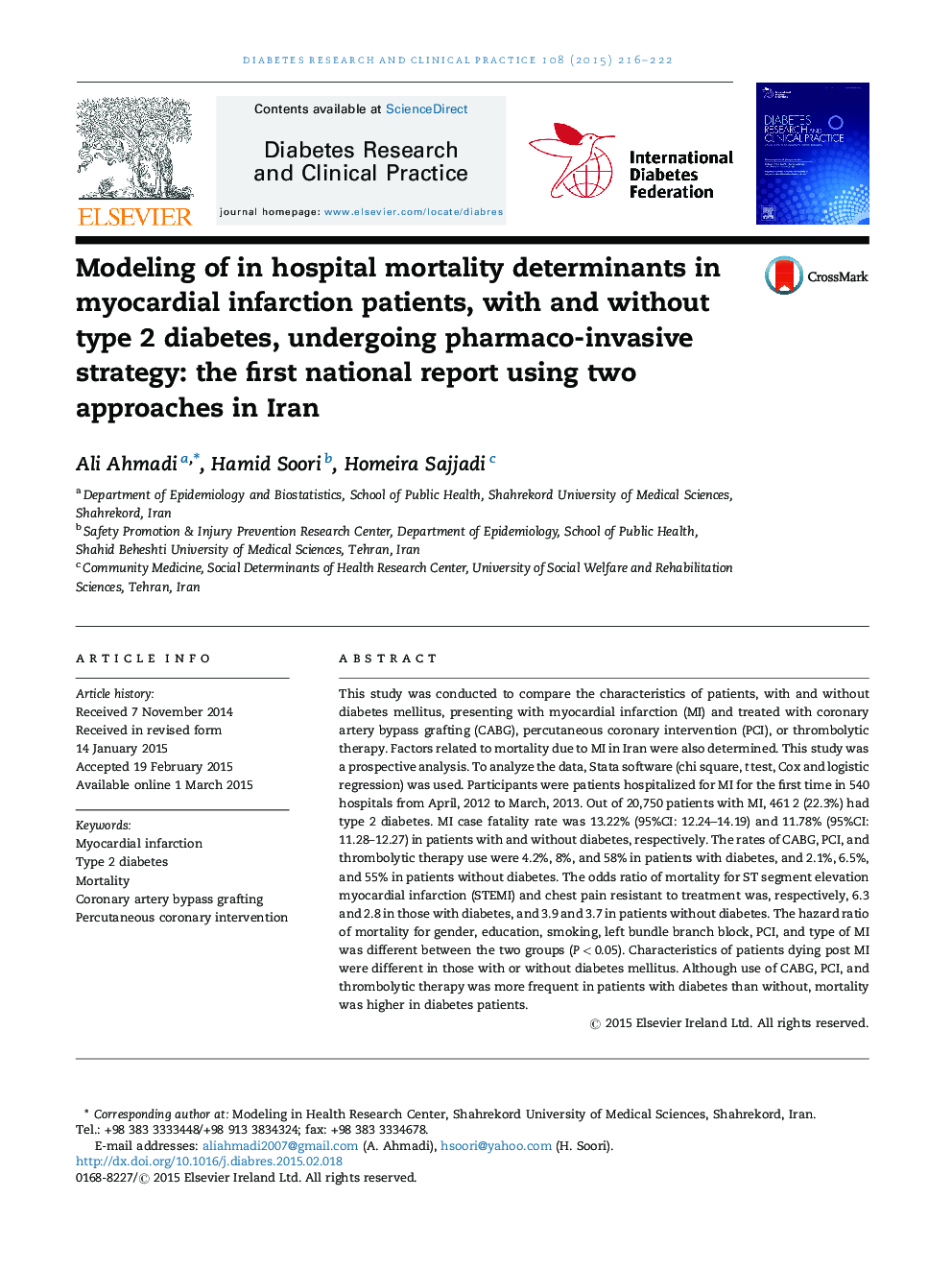| Article ID | Journal | Published Year | Pages | File Type |
|---|---|---|---|---|
| 5899459 | Diabetes Research and Clinical Practice | 2015 | 7 Pages |
Abstract
This study was conducted to compare the characteristics of patients, with and without diabetes mellitus, presenting with myocardial infarction (MI) and treated with coronary artery bypass grafting (CABG), percutaneous coronary intervention (PCI), or thrombolytic therapy. Factors related to mortality due to MI in Iran were also determined. This study was a prospective analysis. To analyze the data, Stata software (chi square, t test, Cox and logistic regression) was used. Participants were patients hospitalized for MI for the first time in 540 hospitals from April, 2012 to March, 2013. Out of 20,750 patients with MI, 461 2 (22.3%) had type 2 diabetes. MI case fatality rate was 13.22% (95%CI: 12.24-14.19) and 11.78% (95%CI: 11.28-12.27) in patients with and without diabetes, respectively. The rates of CABG, PCI, and thrombolytic therapy use were 4.2%, 8%, and 58% in patients with diabetes, and 2.1%, 6.5%, and 55% in patients without diabetes. The odds ratio of mortality for ST segment elevation myocardial infarction (STEMI) and chest pain resistant to treatment was, respectively, 6.3 and 2.8 in those with diabetes, and 3.9 and 3.7 in patients without diabetes. The hazard ratio of mortality for gender, education, smoking, left bundle branch block, PCI, and type of MI was different between the two groups (PÂ <Â 0.05). Characteristics of patients dying post MI were different in those with or without diabetes mellitus. Although use of CABG, PCI, and thrombolytic therapy was more frequent in patients with diabetes than without, mortality was higher in diabetes patients.
Keywords
Related Topics
Life Sciences
Biochemistry, Genetics and Molecular Biology
Endocrinology
Authors
Ali Ahmadi, Hamid Soori, Homeira Sajjadi,
